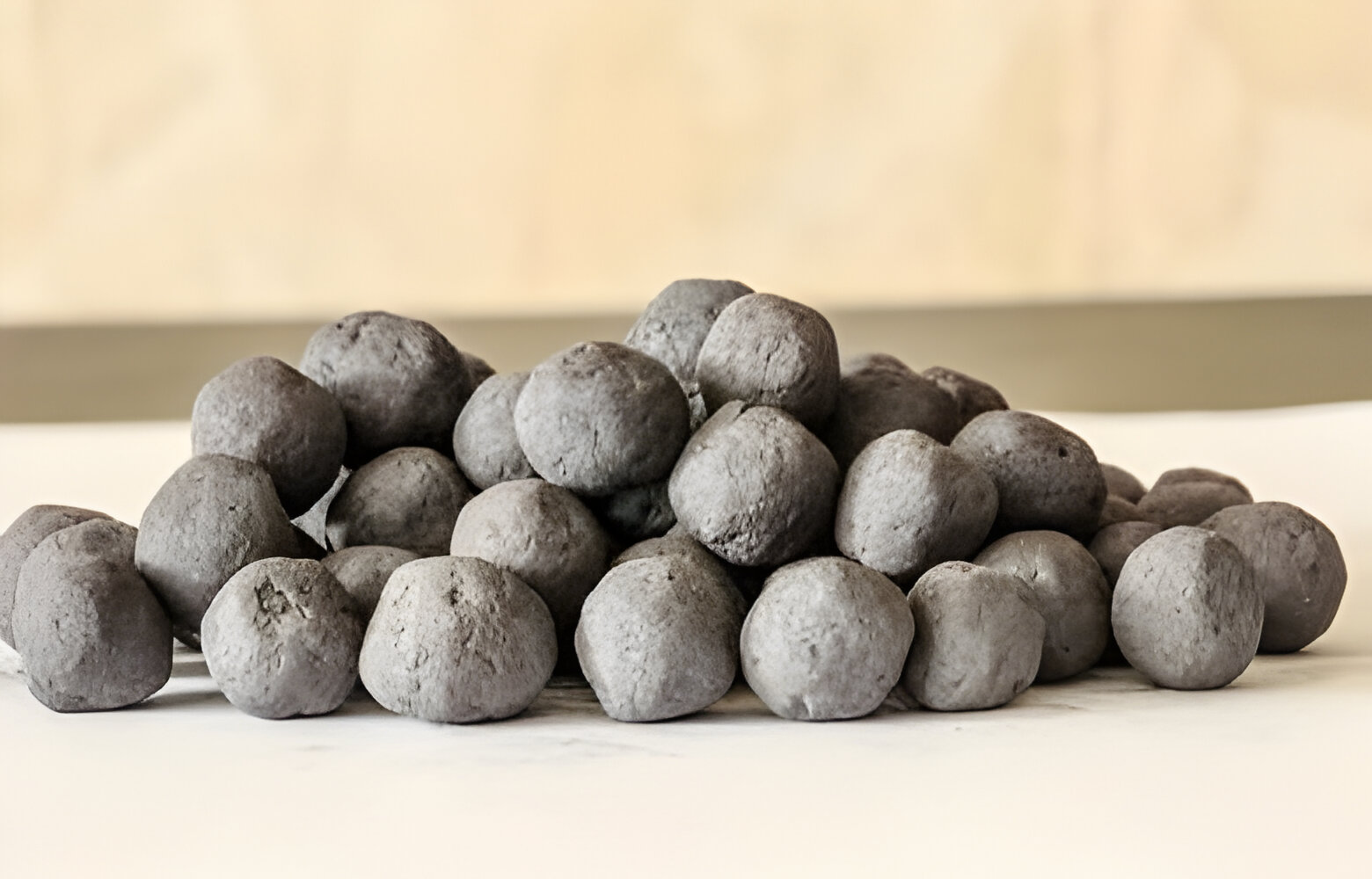Reduce Costs, Boost Quality: Replacing Bentonite with Organic Binders in Pelletization
Pelletizing binders mainly include inorganic binders, organic binders and composite binders, which not only bond iron magnetite or hematite concentrate powder into pellets in the pelletizing process, but also small amount of our products significantly improve the pelletizing rate and the quality of green and dry pellets, playing a fundamental role in the metal smelting process.Our binder can completely or partially replace bentonite in order to decrease the unfavorable elements and improve the efficiency of blast furnace utilization.
According to our production experience, for every 1% bentonite added, the iron grade of the pellet will decrease by approximately 0.6wt.% and the iron content will decrease by approximately 7 kg/ton. An increase of 1% of SiO2 content in the pellet will lead to an increase of 4~7 USD/ton in steelmaking cost, while the organic binder does not contain inorganic components, such as SiO2 and CaO.
- Stronger Pellets
- Increased Efficiency
- Cost-Effective
- Eco-Friendly
- Improved Iron Grade
- Proven Performance
Product Series
| Product Series | Application Areas | Chemical Properties | Characteristics | Effects |
|---|---|---|---|---|
| Qk02 | Iron ore concentrates such as magnetite and hematite | Organic and inorganic composite materials | Light yellow flowable powder | Improving the bonding power of iron ore concentrates |
| Qk06 | Iron ore concentrates such as magnetite and hematite | Organic and inorganic composite materials | Light yellow flowable powder | Improving the bonding power of iron ore concentrates |
| Qk08 | Iron ore concentrates such as magnetite and hematite | Organic composite of multiple polymers | White flowable powder | Improving the bonding power of iron ore concentrates |
| KF08 | Bentonite | Multiple organic substances polymerized | Off-white flowable powder | Improving the bonding power and thermal stability of bentonite |
Comparison between Organic Binder and Bentonite
| Organic Binder | Bentonite |
|---|---|
| Low handling cost due to small dosage | Higher handling cost due to larger dosage |
| High bonding power, pellet forming speed, and forming rate (98% or more) | Average forming rate (more than 80%) |
| High shatter strength of green pellets; remains intact more than 6 times when falling from 0.5m; high compressive strength of dry pellets up to 10 N or more | Low shatter strength of green pellets; low compressive strength of dry pellets; shatters 2 times when falling from 0.5m; about 5 kg or more |
| High green pellet forming rate which leads to reduced amount of powder and returned material; unchanged bursting temperature; improved furnace permeability; better reducibility and higher roasting speed thereby significantly increasing the yield | Low green pellet forming rate which leads to large amount of powder, more returned material, and less furnace permeability thereby reducing the yield and quality |
| Roasted pellets have good thermal stability for furnace feeding which can reduce SiO and Al2O3 slag amount, facilitate blast furnace operation, improve the blast furnace utilization rate, and reduce energy consumption in production | More SiO2 and Al2O3 will increase the slag amount and reduce the iron grade. (Since bentonite is mainly composed of SiO2 and Al2O3, the ignition loss is low and almost all of the bentonite will remain in the pellets after roasting, which increases the slag amount and thereby reduces the iron grade of pellets |
| Compared with bentonite, organic binders can improve the iron grade of roasted pellets | Reduced grade of the roasted pellets (Production experience shows that 1wt% reduction in bentonite added to the pellets corresponds to 0.6% higher pellet iron grade, 1.2% less coke ratio, and 1.8% more output |



